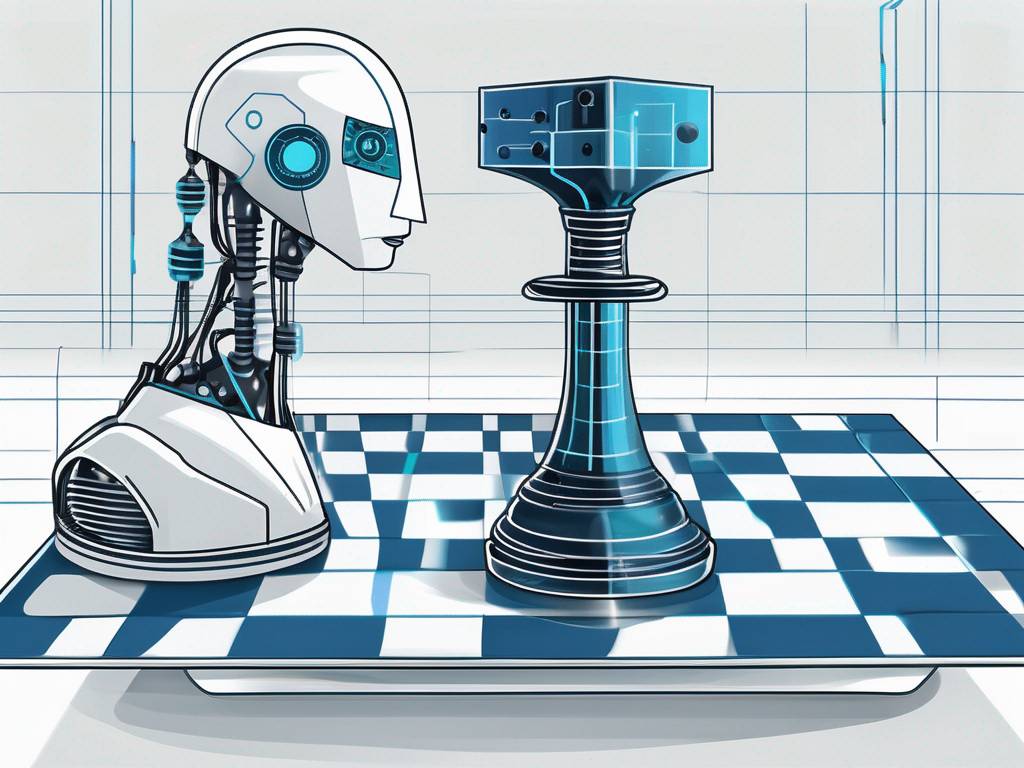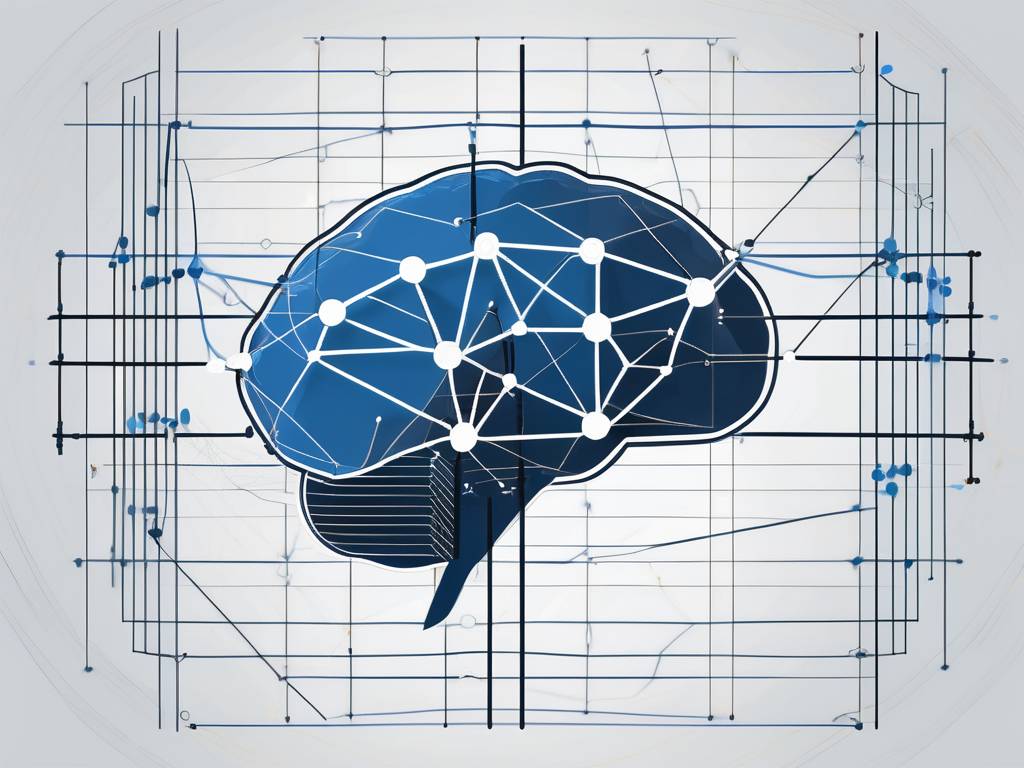What is Deep Learning: Machine Learning Explained
Key Insights
- Deep learning employs artificial neural networks inspired by the human brain to learn from large and complex datasets, enhancing machines in pattern recognition and decision-making
- This technology powers self-driving cars and voice-controlled devices, enabling them to perform complex tasks such as object recognition and language processing
- The architecture of deep learning involves multiple interconnected processing layers that require significant data and computational power for training
- Ongoing research in deep learning aims to improve model efficiency and expand its applications across a broader range of fields
Deep learning is a machine learning technique that enables computers to learn from examples, similar to the natural learning process observed in humans. At the heart of deep learning lies the concept of artificial neural networks, which are inspired by the structure of the human brain.
Deep learning technology is the key behind self driving cars, allowing them to recognize stop signs and differentiate pedestrians from inanimate objects. It also plays a crucial role in enabling voice control across consumer devices like phones, tablets, TVs, and hands-free speakers. In this article, we will explore the basics of deep learning, its applications, and its significance in the field of machine learning.
What is Deep Learning?
Deep learning is a specialized area within machine learning that focuses on algorithms known as artificial neural networks, modeled after the human brain’s structure and function. The “deep” aspect of deep learning refers to the multiple layers of interconnected nodes or “neurons” within these networks. Each layer processes the output from the previous layer as input for the next. This hierarchical data processing employs weights, biases, and activation functions to facilitate complex predictions and decisions.
Training a deep neural network typically requires a large amount of data and substantial computing power, often requiring graphics processing units (GPUs). Once trained, the model can make predictions or decisions based on new, unseen data. This capability makes them highly effective for tasks like recognizing faces, objects, and even emotions from images or video.
Deep Learning vs. Machine Learning
Deep learning models are intrinsically more complex than traditional machine learning models due to their architecture. Deep learning models consist of multiple layers—often dozens or hundreds—that process input data incrementally, learning more abstract and refined features at each subsequent layer.
In contrast, traditional machine learning models are usually less complex. They might use simpler algorithms, such as logistic regression or decision trees, which do not involve layers of learning but rather focus on learning from the input data directly to make predictions or classifications. These models require substantial input from human experts to design and select features that effectively capture the essence of the data.
Deep learning models also require large amounts of data to train effectively. The depth and complexity of the models necessitate vast datasets to learn from so that they can generalize well when making predictions on new, unseen data. On the other hand, traditional machine learning models can often achieve considerable success with smaller datasets. Since these models are typically less complex, they do not require the same level of computational power as deep learning models.
How Deep Learning Networks Function
Deep learning neural networks are designed to emulate the human brain by utilizing multiple layers of processing. These networks range from shallow, with just one layer, to highly complex structures with hundreds of layers. This depth enables them to recognize more intricate patterns than other machine learning methods.
A neural network begins by receiving inputs that are processed through various hidden layers. These layers use adjustable weights that are refined during training to produce a prediction. Through this multilayered process, neural networks can adapt and learn from extensive datasets.
Key Components of Neural Networks
Input Layer in Neural Networks
The input layer receives data and prepares it for processing by the rest of the network. Each neuron in this layer typically represents a single feature of the input data. For instance, in image processing, each neuron might correspond to the intensity or color of a single pixel.
Hidden Layers in Neural Networks
Nested between the input and output layers, hidden layers are where computations occur. Each hidden layer consists of neurons equipped with adjustable weights and biases. The complexity and number of these layers dictate the network’s capability to process intricate patterns and tackle sophisticated problems.
Forward Propagation
Forward propagation is the process of moving data from the input layer through the hidden layers to the output layer. Each neuron processes the input by multiplying it with weights, adding a bias, and passing the result through an activation function. This process repeats across layers until reaching the output layer.
Output Layer in Neural Networks
This layer generates the network’s final predictions, decisions, or classifications. It integrates all insights derived from the hidden layers to produce results based on the input data and learned patterns. The structure of the output layer varies depending on the task—be it classifying data into categories or predicting numerical values.
Deep Learning Models & Algorithms
There are several types of deep learning models and algorithms that are commonly used in the field of machine learning. These include Convolutional Neural Networks (CNNs), Recurrent Neural Networks (RNNs), and Deep Belief Networks (DBNs), among others.
Each of these models and algorithms has its own strengths and weaknesses, and is suited to different types of tasks. For example, CNNs are particularly good at processing images, while RNNs are often used for sequence prediction tasks, such as predicting the next word in a sentence.
Convolutional Neural Networks (CNNs)
CNNs are deep learning algorithms that are particularly powerful for processing images. CNNs are composed of one or more convolutional layers, followed by one or more fully connected layers. The convolutional layers are used to detect features in the input images, while the fully connected layers are used to classify the images based on these features.
The key advantage of CNNs is that they are able to automatically learn and extract features from images, without the need for manual feature extraction. This makes them highly effective for tasks such as image classification, object detection, and facial recognition.
Recurrent Neural Networks (RNNs)
RNNs are deep learning algorithms that are designed to process sequential data. Unlike other neural networks, which process inputs independently, RNNs have a form of memory that allows them to take into account previous inputs in their predictions.
This makes RNNs particularly suited to tasks such as time series prediction, natural language processing, and speech recognition. However, RNNs can be difficult to train effectively, due to problems such as vanishing and exploding gradients.
Applications of Deep Learning Models
Deep learning has proven effective in a wide range of applications, from self-driving cars to medical diagnosis, due to its ability to learn from large amounts of data and its flexibility in handling various types of tasks.
Deep Learning in Autonomous Driving
Deep learning is crucial for enhancing the capabilities and performance of autonomous vehicles in real-world conditions. Automotive researchers are leveraging convolutional neural networks to accurately and automatically detect and classify objects such as stop signs and traffic lights. This technology integrates seamlessly with deep reinforcement learning, which improves path planning and enables complex navigation decisions. Additionally, deep learning algorithms are vital for predictive maintenance and driver monitoring, significantly enhancing both safety and reliability.
Deep Learning in Medical Diagnostics
Deep learning is also used in the field of medicine. In image analysis, CNNs are pivotal for detecting abnormalities such as tumors and fractures in images from MRIs, CT scans, and x-rays. These models are trained on thousands of labeled images, allowing them to identify patterns not easily visible to humans. Beyond imaging, medical researchers are using deep learning to automatically detect diseases. Teams at UCLA built an advanced microscope that yields a high-dimensional data set used to train a deep learning application to accurately identify cancer cells.
Deep Learning in Natural Language Processing
Deep learning models are able to process and understand human language by converting words into vectors, which can then be processed in a similar way to numerical data. This allows the models to understand the semantic meaning of words, and to understand the context in which they are used.
Deep learning is used in the natural language processing (NLP) tasks of speech recognition, text generation, and machine translation, among others. It is also used in the creation of chatbots and personal assistants, which are capable of understanding and responding to human language in a more natural and intuitive way.
Deep Learning in Image & Video Processing
Deep learning significantly enhances image and video processing capabilities beyond what traditional methods can achieve. It excels in tasks such as facial recognition, object detection, and image quality enhancement.
For example, deep learning can be used to automatically remove noise from images, or to enhance the quality of low-resolution images. It can also be used to detect and recognize faces in images and videos, which is a critical component of many security systems.
Challenges & Limitations of Deep Learning
While deep learning has been highly successful in a wide range of applications, it also has a number of challenges and limitations. One of the main challenges is the need for large amounts of data.
Data & Computationally Intensive
A deep learning algorithm typically requires tens of thousands or even millions of examples to learn effectively. Deep learning algorithms are also computationally intensive, and typically require powerful hardware, such as GPUs, to train effectively. This can make deep learning expensive and inaccessible for smaller organizations or individuals.
Overfitting & Underfitting
Overfitting is a common problem in machine learning, and it occurs when a model learns the training data too well. In this case, the model will perform well on the training data, but it will not generalize well to new, unseen data. This is often a result of the model being too complex, with too many parameters relative to the number of observations.
Underfitting, on the other hand, occurs when a model is too simple to capture the underlying structure of the data. In this case, the model will perform poorly on both the training data and new, unseen data. Both overfitting and underfitting can be mitigated by using techniques such as regularization and cross-validation.
Interpretability & Transparency
One of the main criticisms of deep learning is that it lacks interpretability and transparency. Deep learning models are often described as “black boxes”, because it is difficult to understand how they make their predictions. This can be a problem in fields such as healthcare and finance, where it is important to understand why a deep learning model made a particular prediction.
Efforts are being made to improve the interpretability and transparency of deep learning models, through techniques such as feature visualization and attention mechanisms. However, this remains a significant challenge in the field of deep learning.
Future of Deep Learning
The future of deep learning is incredibly promising, with new deep learning techniques and applications being developed all the time. One of the most exciting areas of research is in unsupervised learning, where models learn from unlabeled data. This has the potential to greatly reduce the need for labeled data, which is one of the main challenges in deep learning.
Another promising area of research is in the development of more efficient training algorithms. This could help to reduce the computational requirements of deep learning, making it more accessible to a wider range of organizations and individuals.
Deep Learning & Artificial Intelligence
Deep learning is a key technology behind the current resurgence of interest in artificial intelligence. It is being used to develop AI systems that can perform tasks that were previously thought to be the exclusive domain of humans, such as recognizing images, understanding natural language, and playing complex games.
As deep learning continues to advance, it is likely to play an increasingly important role in the development of AI. This could lead to the development of AI systems that are capable of performing a wide range of tasks, from driving cars to diagnosing diseases, with a high degree of accuracy and autonomy.
Deep Learning & Big Data
Deep learning is also closely linked with the rise of big data. The availability of large amounts of data is one of the key factors that has enabled the success of deep learning. Deep learning algorithms are able to learn complex patterns from large amounts of data, making them highly effective for tasks such as image recognition, speech recognition, and natural language processing.
As the amount of data continues to grow, it is likely that deep learning will become even more important. This could lead to the development of new deep learning algorithms and models, as well as new applications of deep learning in fields such as healthcare, finance, and transportation.
Questions?
-
What is deep learning?Toggle questionDeep learning is a specialized area within machine learning that focuses on machine learning algorithms known as artificial neural networks, modeled after the human brain's structure and function. The "deep" aspect of deep learning refers to the multiple layers of interconnected nodes or "neurons" within these networks. Each layer processes the output from the previous layer as input for the next. This hierarchical data processing employs weights, biases, and activation functions to facilitate complex predictions.
-
How does deep learning differ from traditional machine learning?Toggle questionTraditional machine learning algorithms often require structured data and need manual feature extraction to learn and make predictions. In contrast, deep learning models thrive on large volumes of unstructured data, such as images, text, and audio. These models utilize deep neural networks to automatically detect and learn complex features directly from the data, without requiring explicit programming for feature extraction. This capability enables deep learning models to achieve high accuracy and performance in tasks like image recognition and natural language processing.
-
What are neural networks?Toggle questionNeural networks are the core of deep learning. They are computing systems made up of interconnected nodes or "neurons" that process data in layers. The first layer receives the input data, and each subsequent layer builds a more detailed understanding until the final layer produces the output.
-
What are some applications of deep learning?Toggle questionDeep learning is applied in various domains, such as image and video recognition for tasks like facial recognition and autonomous driving, natural language processing for translating languages and generating text, and even in healthcare for diagnosing diseases from medical images. It's also used in voice recognition systems, recommendation systems, and to enhance the capabilities of robots and drones through better perception and decision-making processes.

 hello@westlink.com
hello@westlink.com  (866) 954-6533
(866) 954-6533  700 N Colorado Blvd,
700 N Colorado Blvd,







Comments